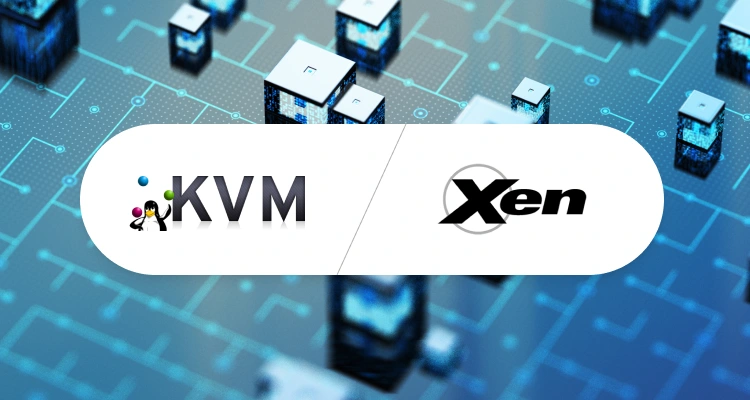
In the world of virtualization, where businesses strive to optimize resources and enhance scalability, choosing the right hypervisor is critical. Xen and KVM stand out as two prominent contenders in this arena, each with its own set of strengths and weaknesses. Understanding the differences between Xen and KVM can help organizations make informed decisions about which virtualization solution best suits their needs.
- Architecture:
- Xen: Originally developed at the University of Cambridge, Xen follows a hypervisor-based architecture. It operates directly on the hardware, creating a layer between the operating system and the physical hardware. This architecture allows for efficient resource allocation and isolation.
- KVM (Kernel-based Virtual Machine): KVM, on the other hand, leverages the Linux kernel to act as a hypervisor. It converts the Linux kernel into a bare-metal hypervisor, enabling virtualization capabilities. KVM benefits from tight integration with the Linux ecosystem and inherits its stability and security features.
- Performance:
- Xen: Historically, Xen has been renowned for its strong performance, especially in environments requiring high levels of isolation and resource management. Xen’s paravirtualization approach, where the guest operating systems are modified for better performance, contributes to its efficiency.
- KVM: KVM’s performance is also noteworthy, particularly for workloads that demand near-native performance. KVM benefits from hardware virtualization extensions (Intel VT-x and AMD-V), allowing guest operating systems to run unmodified, which can lead to improved performance in some scenarios.
- Management and Compatibility:
- Xen: Xen traditionally offered a more complex management interface compared to KVM. However, with the introduction of tools like Xen Orchestra and XenCenter, managing Xen-based virtual environments has become more streamlined. Xen supports a wide range of guest operating systems, including Linux, Windows, and various BSD distributions.
- KVM: Being integrated into the Linux kernel, KVM enjoys seamless compatibility with Linux-based tools and utilities. Management of KVM instances can be facilitated through tools like virt-manager and oVirt. While KVM primarily targets Linux-based workloads, it also supports Windows and other operating systems with varying degrees of performance and compatibility.
- Community and Support:
- Xen: Xen benefits from an active and supportive community, with contributions from both individual developers and corporate backers. It is used in a variety of environments, from small businesses to large enterprises and cloud providers.
- KVM: As part of the Linux kernel, KVM inherits the extensive support and development resources of the Linux community. This ensures regular updates, security patches, and ongoing improvements. KVM’s popularity has surged in recent years, particularly within the open-source and cloud computing communities.
- Security:
- Xen: Xen has a strong reputation for security, primarily due to its early adoption of paravirtualization and rigorous isolation mechanisms between guest operating systems. Xen’s architecture prioritizes security and isolation, making it a preferred choice for environments with stringent security requirements.
- KVM: KVM benefits from the security features inherent in the Linux kernel, such as SELinux (Security-Enhanced Linux) and other access control mechanisms. While KVM provides robust security, some argue that Xen’s approach to paravirtualization offers additional layers of isolation and protection.
- Licensing:
- Xen: Xen is released under the GNU General Public License (GPL), making it free and open-source. This allows for flexibility in deployment and customization without licensing fees.
- KVM: Similarly, KVM is open-source and included in the mainline Linux kernel, also licensed under the GPL. Organizations can deploy KVM without incurring licensing costs, which can be advantageous for budget-conscious businesses.
In conclusion, both Xen and KVM are powerful virtualization solutions with distinct characteristics. Xen excels in performance, security, and isolation, making it well-suited for environments prioritizing these aspects. On the other hand, KVM offers seamless integration with the Linux ecosystem, strong community support, and near-native performance for a wide range of workloads. Ultimately, the choice between Xen and KVM depends on the specific requirements, preferences, and existing infrastructure of each organization.